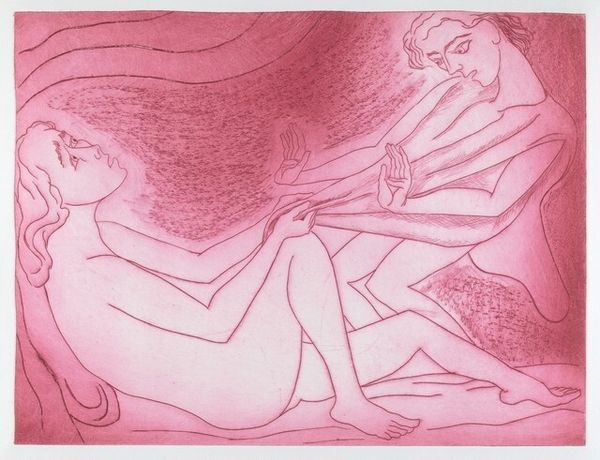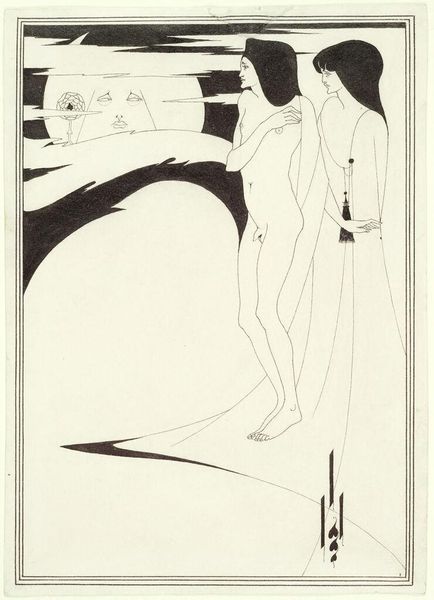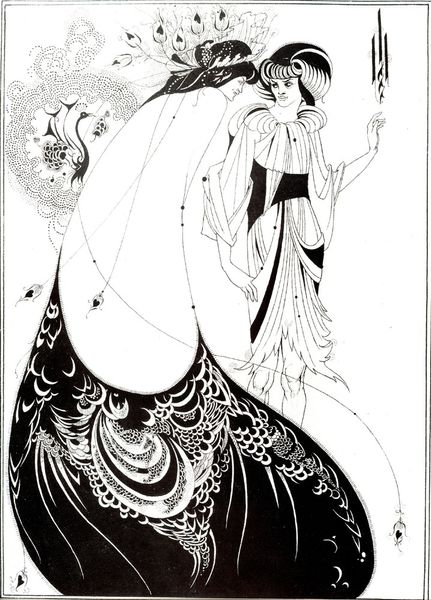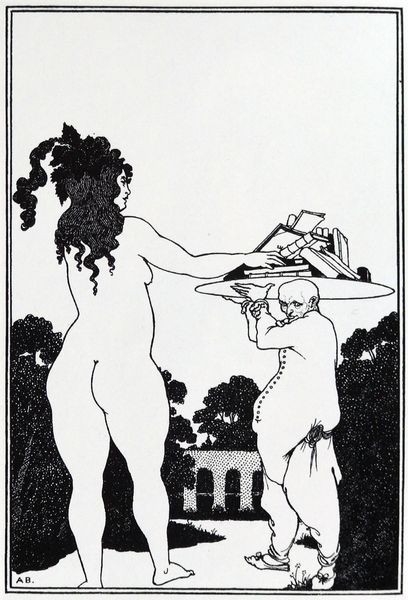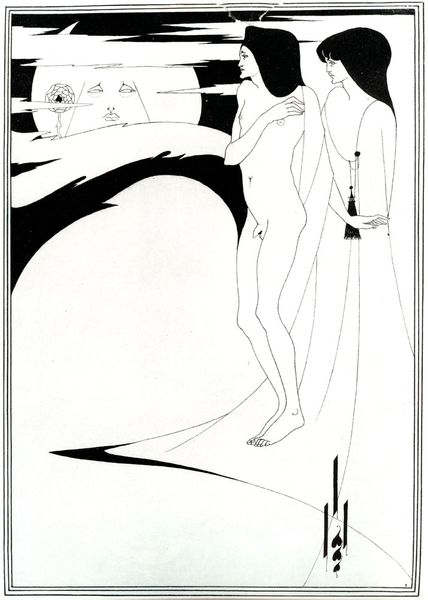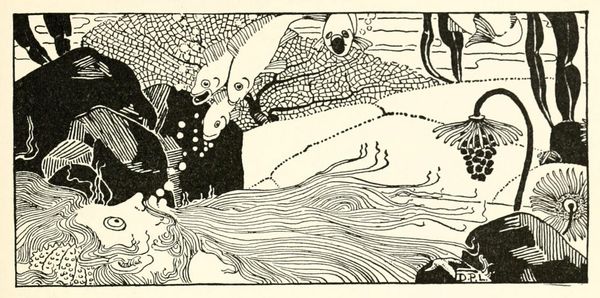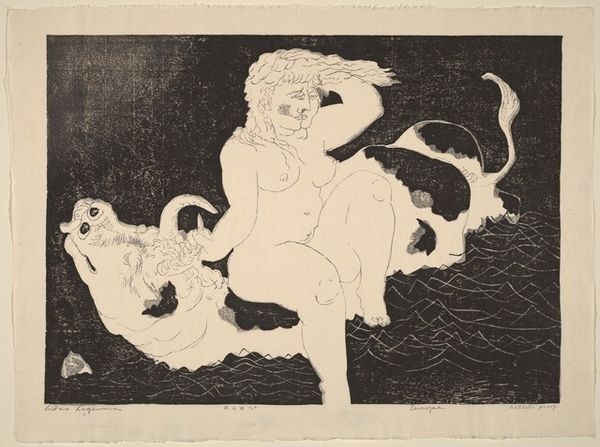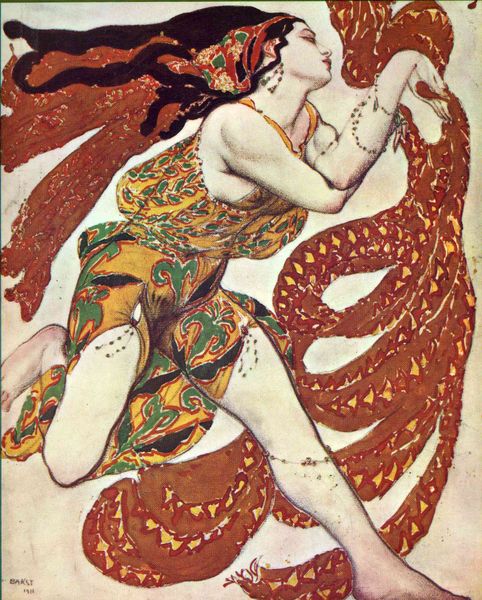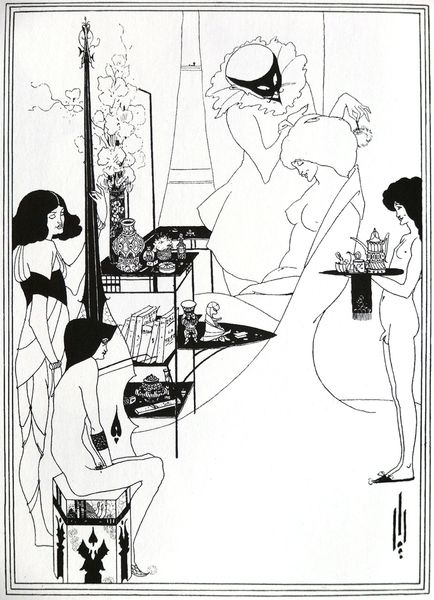
drawing, ink
#
drawing
#
allegories
#
art-nouveau
#
symbol
#
pen illustration
#
figuration
#
ink line art
#
ink
#
line
#
symbolism
#
nude
Copyright: Public domain
Editor: So, here we have Gustav Klimt's drawing, "Fishblood," from 1898, made with ink. The monochrome palette makes the whole scene feel dreamlike, almost eerie, especially with the figures seemingly floating underwater. What do you see in this piece? Curator: This drawing hums with the echoes of ancient myths and primordial waters. The fish, often a symbol of fertility and transformation in many cultures, is juxtaposed with these female figures, evoking a sense of both vulnerability and power. What kind of relationship do you think they have? Editor: It’s interesting, because their faces have such different expressions. Some seem peaceful, and one even looks a little distressed! Does that change the meaning of the symbols at all? Curator: Precisely! Consider the symbolism of water itself: life-giving, but also a force that can overwhelm. Klimt is not just depicting beautiful figures, but tapping into deeply ingrained associations with beauty, danger, and the cyclical nature of existence. Notice how the strong black lines of the flowing hair contrasts with the delicate rendering of the bodies. Do you feel the tension in that visual opposition? Editor: Definitely! And it makes me wonder if the "fishblood" title is suggesting something about sacrifice or perhaps even the origins of life itself, a return to the source? Curator: Exactly! The layers of symbolic interpretation invite us to delve into our own understanding of womanhood, nature, and the currents that shape our lives. Each viewing reveals something new about those connections, as if we’re also drifting in these currents ourselves. Editor: I’ve never thought of it that way before, but it gives me a totally different perspective. It really is about drawing on deep collective imagery and ideas. Thanks for sharing your perspective!
Comments
No comments
Be the first to comment and join the conversation on the ultimate creative platform.

